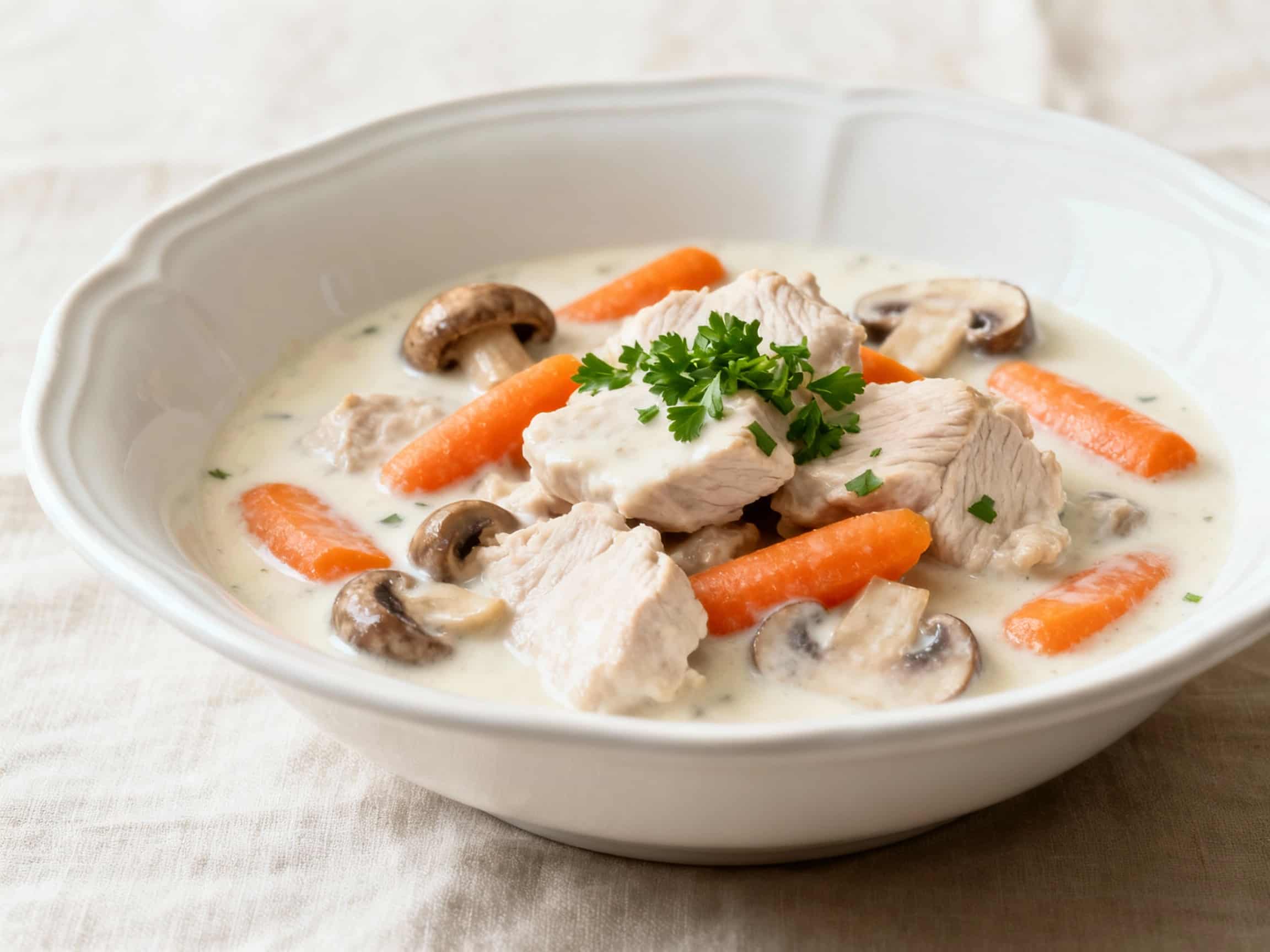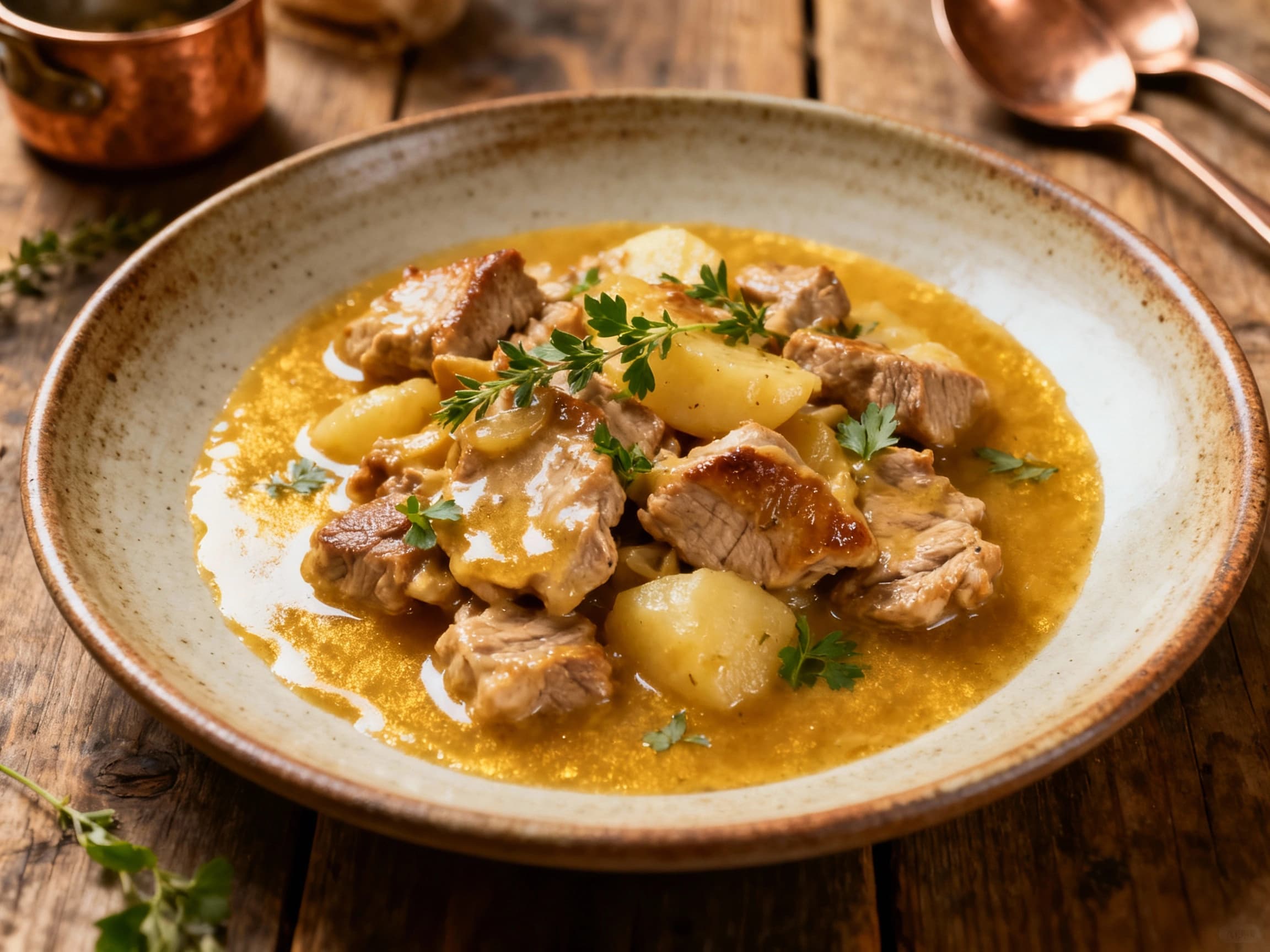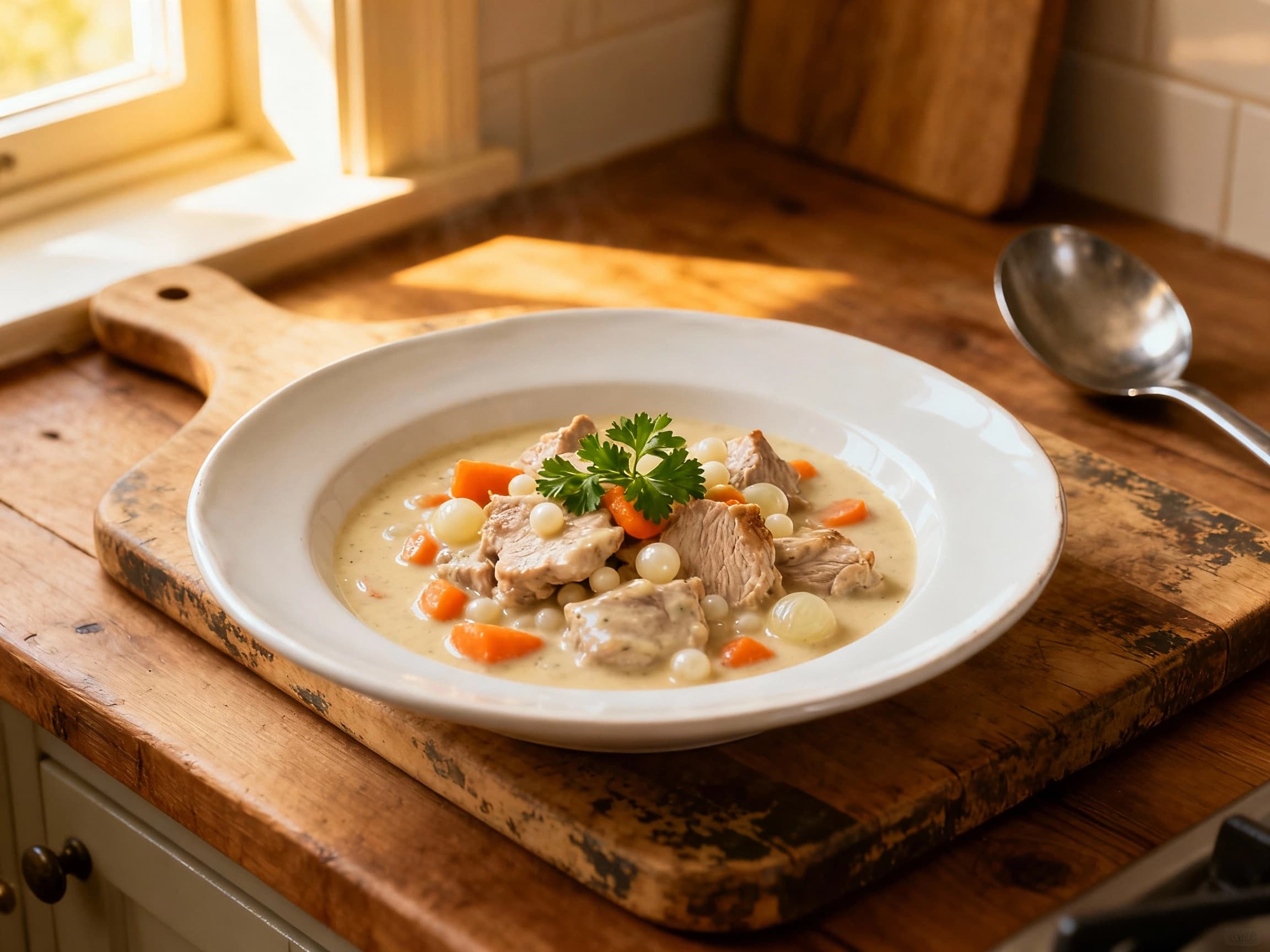
Blanquette de Veau
Blanquette de veau
- Country
- France
- Region
- Normandy
- Recipes
- 2 Recipes
Dish information
Blanquette de Veau is a classic and beloved French stew, often considered a quintessential example of French home cooking. Unlike many stews that feature browned meat and rich, dark sauces, Blanquette de Veau (meaning "white stew of veal") is characterized by its pale, creamy sauce and tender, un-browned pieces of veal. The dish's name itself, "blanquette," refers to the whiteness of its sauce, which is a hallmark of this elegant and comforting preparation. The history of Blanquette de Veau dates back several centuries, emerging from a tradition of utilizing cuts of meat that might otherwise be overlooked. The technique of preparing meat without browning ensures its tenderness and prevents the development of complex, dark flavors, allowing the delicate taste of veal to shine through. Historically, it was a practical dish to prepare, often using leftover roast veal, which would then be simmered in a white stock and enriched with a liaison (a mixture of egg yolks and cream) to create the signature pale, fragrant sauce. Over time, the recipe evolved to use fresh veal, gently cooked in a light broth with aromatic vegetables like carrots, onions, and leeks, and usually mushrooms. The broth is then strained and thickened, typically with a roux and liaison, to create the creamy, flavorful sauce. Blanquette de Veau embodies the French culinary philosophy of 'cuisine bourgeoise' – hearty, well-prepared dishes that are sophisticated in taste but approachable for home cooks. It is cherished for its delicate flavors, its comforting warmth, and its status as a timeless classic. It's often served with plain white rice or boiled potatoes, allowing the exquisite sauce to be fully savored, making it a beloved symbol of French culinary tradition and comfort.
Timeline
Early forms of 'white stews' with veal become popular in French cuisine as a way to prepare delicate meats.
Blanquette de Veau as a distinct dish, characterized by its white sauce and un-browned veal, is formalized in French cookbooks.
The dish firmly establishes itself as a treasured classic of French home and bistro cooking, known for its comforting elegance.

